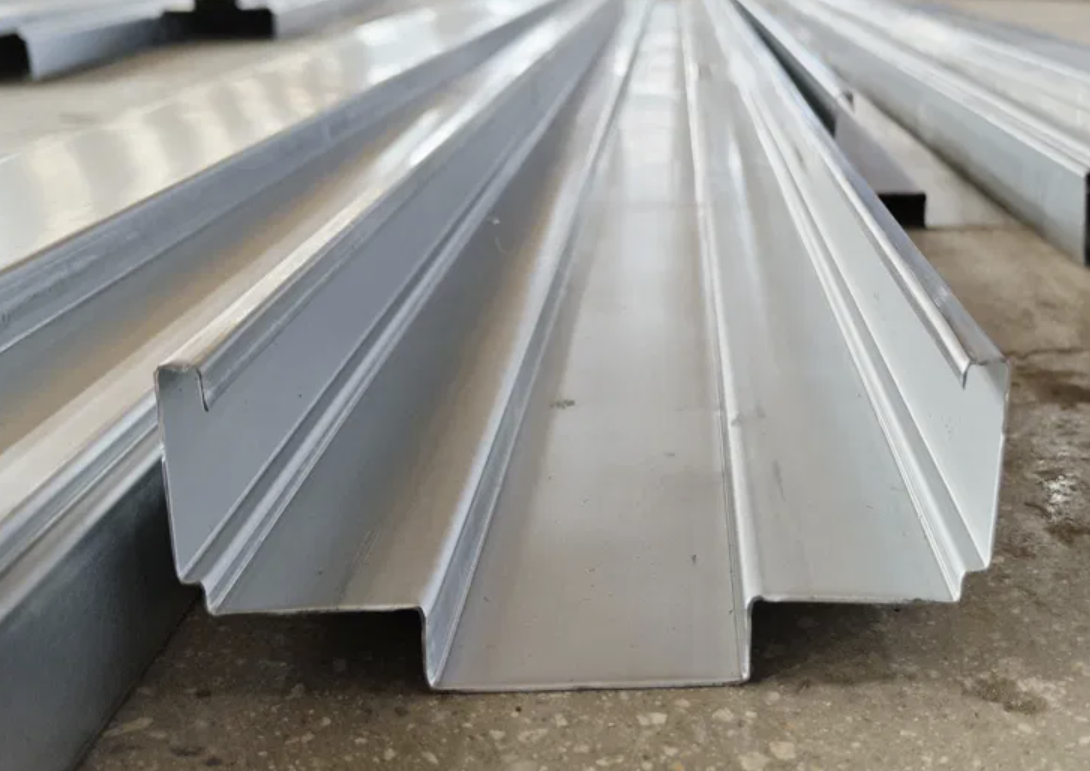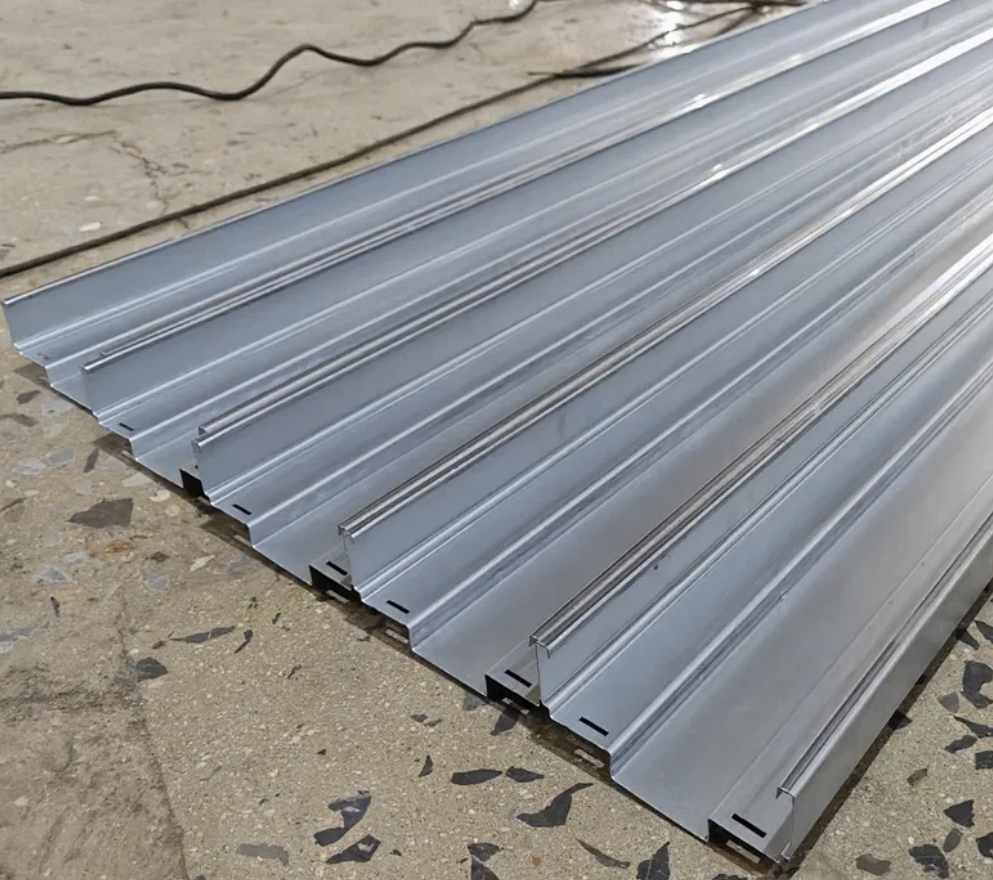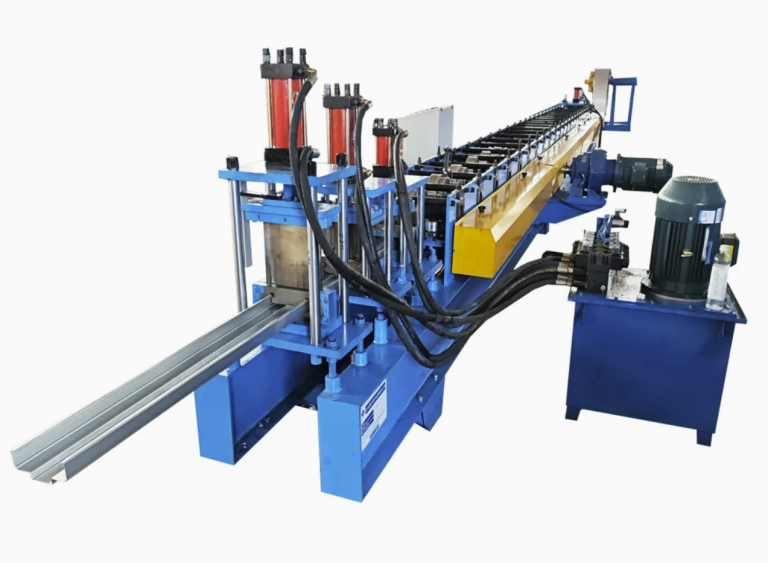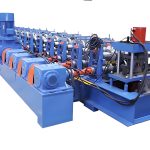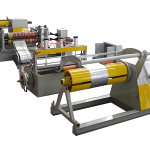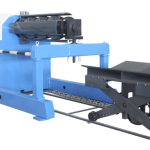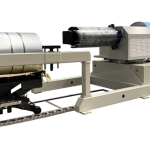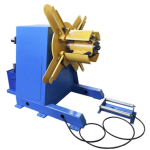The door frame roll forming machine operates under a sophisticated PLC control system. Initially, the material unwinds from the decoiler and passes through a multi-roller leveling system, ensuring a smooth, flat surface before entering the forming stage. Through a series of precise roller pressing and stamping processes, the material takes shape, followed by accurate cutting via the integrated cutting machine. For added efficiency, an optional palletizer can automatically stack the finished products with precision and ease.
Components and parts of the door frame roll forming machine
| No. | Item | Specification | Remark |
|---|---|---|---|
| 1 | Metal Decoiler (with Feeding Trolley) | 3T / 5T / 8T / 10T / 15T / 20T | Powered by motor or hydraulic motor for reliable material unwinding |
| 2 | Feeding Device | Adjustable width: 300mm–850mm | Equipped with leveling rollers for precise material alignment |
| 3 | Front Shear | Automatic or manual cutting options | Flexible operation tailored to production needs |
| 4 | Roll Forming Machine | Speed: 15m/min–30m/min | Customized based on customer-provided profile drawings |
| 5 | Safety Cover | Guardrail or protective cover | Designed to ensure operator safety and equipment protection |
| 6 | Panel Cutting | Fixed or tracking cutting | Driven by motor or hydraulic motor for precise cuts |
| 7 | Output System | Manual supporter or automatic palletizer | Streamlined handling for efficient production workflows |
| 8 | Panel Stacking Direction | Parallel or perpendicular | Configurable to meet customer-specific requirements |
| 9 | Lubricating System | Automatic bearing lubrication | Enhances equipment longevity and smooth operation |
| 10 | Hydraulic System | Powers decoiler and cutting machine | Robust system for consistent and efficient performance |
| 11 | Electric Control System | PLC and HMI control panel | Intuitive interface for seamless operation and precise control |
The production of door frames varies depending on wall thickness and regional standards, but the most advanced and reliable method today is the roll forming line. This innovative approach ensures continuous, precise, and aligned production of high-quality door frames.Key Benefits of Using a Door Frame Roll Forming Line
-
- Versatile Production: A single roll forming machine can craft a wide variety of door frame types, accommodating different widths and heights with ease, offering unmatched flexibility to meet diverse design requirements.
- Precision Hinge and Lock Integration: The roll forming process seamlessly incorporates hinge and lock spot punching during production, ensuring accurate placement and enhanced functionality without additional steps.
- Adaptable Material Thickness: Roll forming machines can process various steel thicknesses, allowing manufacturers to produce door frames tailored to specific needs—whether lightweight for standard use or heavier for enhanced durability.
Product Parameters
| Feature | Standard Model | High-Speed Model |
|---|---|---|
| Operating Speed | 10–15 m/min | 15–30 m/min |
| Power Consumption | 5.5–11 kW | 11–22 kW |
| Dimensions (L × W × H) | 14 × 2.3 × 2.2 m | 14 × 2.3 × 2.2 m |
| Machine Weight | 8–12 tons | 10–16 tons |
| Material Width | 300–850 mm | 300–850 mm |
| Material Thickness | 0.3–3.0 mm (G550–G300) | 0.3–3.0 mm (G550–G300) |
| Compatible Materials | Colored Steel, Stainless Steel, Galvanized Steel, Aluminum Sheet | Colored Steel, Stainless Steel, Galvanized Steel, Aluminum Sheet |
| Roller Stations | 12–18 | 18–26 |
| Transmission System | Hydraulic Motor | Servo Motor |
| Cutting Mechanism | Continuous Flying Cut with Hydraulic Cylinder | Continuous Flying Cut with Hydraulic Cylinder |
| Packaging System (Optional) | Fully Automated Stacking System | Fully Automated Stacking System |
| Control System | PLC and Servo Motor Control, Human-Machine Interface, Safety Warning Net, Alarm Light | PLC and Servo Motor Control, Human-Machine Interface, Safety Warning Net, Alarm Light |
